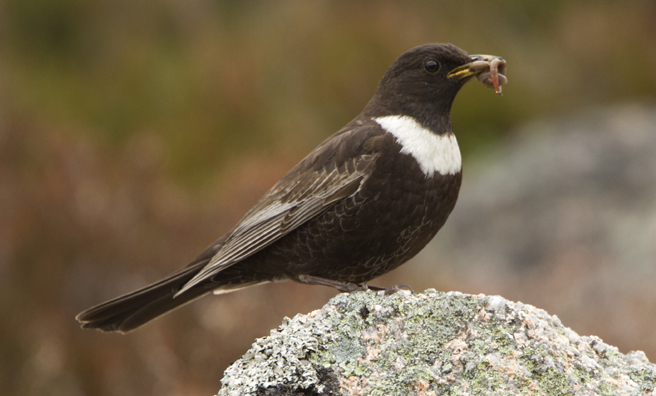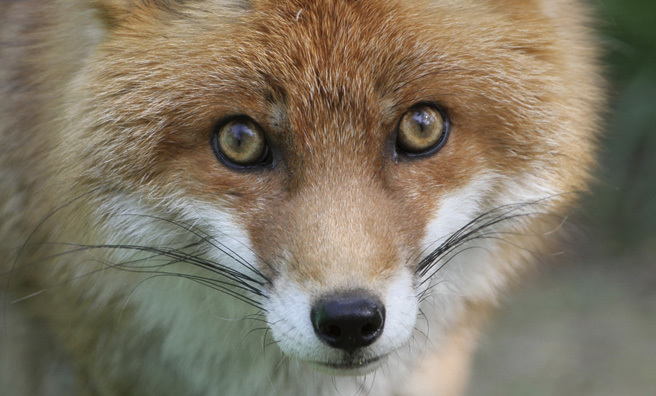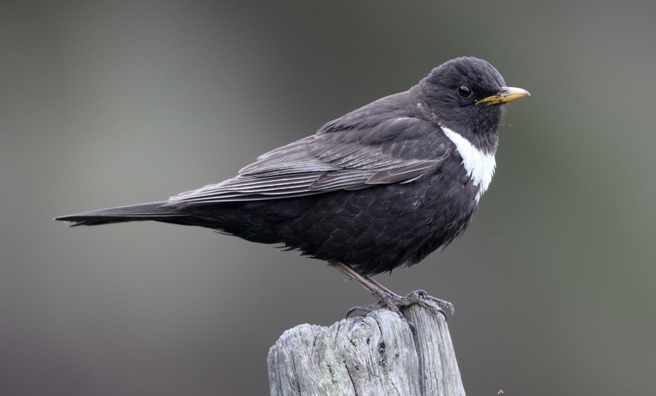A Few Bars Of Birdsong

You remember late March, of course, when summer temperatures lay on hill and shore for two breathless weeks.
You scratched your head and harked back out loud to 2011’s account of the same month when the land was entombed and lifeless in ice and snow and you shook your head in blank incomprehension at what passes for our climate.
This particular late March I was in the nearest eagle glen, hunkered down by my customary rock, a viewpoint that commands a wide tract of the birds’ home territory. In 30 years or so of sitting here at this time of year, accustoming to the sights and sounds of embryonic spring, you would almost invariably find me happed in fleece and hefty winter jacket, and with an equally hefty flask of hot coffee to keep the spirits up and the cold out. But this late March I sat in a short-sleeved shirt and drank only cool, clear mountain water from the burn.
Surely how it will be in paradise
The surreal quality of all this was enhanced by the winter-wearied appearance of the glen, the grasses bleached, the birches bare and thronged together in that mysterious purple haze that clings to their winter branches, patches of scruffy old snow high up. But the weather was high summer, a Highland summer shorn of its midges, which is surely how it will be in paradise.
There were also the first stirrings of birdsong, and I am accustomed to little enough of that during the earliest days of any eagle watch. There were two tree pipits sliding down chutes of singing air into two solitary birches about 50 yards apart. And robins and tits had been singing and zinging about the trees on the lower slopes, and bullfinches called in woody, flutey tones. The early warmth had moistened all their thrapples early and hastened their journey to these elevated realms.
Slowly, and by accumulating degrees of concentration and efficiency, my state of mind evolved into the deep well of the task in hand, watching the distant eyrie and scanning the sky, the hillsides and the airspaces between hillsides for the comings and goings of the eagles, and after an hour or so I had settled into the heart of the watch with every sense alert and when almost anything is possible.
I began to pick up on a new bird voice
It was mid-afternoon when I began to pick up on a new bird voice and realised it had been sounding for some time. It drifted into my mind as if from a great distance, but as soon as I latched on to it, it was robust and nearby and rising from the throaty landscape voice of the glen’s river where it rattles down the headwall before sliding through the relatively flat floor of the upper glen.
The voice had a querulous edge to it that was both familiar and strange at once. Familiar because surely it was the scolding note of a blackbird, but why would a blackbird be up here? “Because,” I told myself as the penny dropped, “it’s a mountain blackbird.”
The mountain blackbird’s current widespread decline is not well understood
The mountain blackbird, better known as the ring ouzel, has drifted in and out of my years in the eagle glen. Its occasional absences – and its current widespread decline – are not well understood. There are years when its song is the anthem of the upper glen, pealing across half a mile of still air, riding above the gruff rasp of the river hour after hour from April to September, at which point it thinks better of the whole enterprise and heads south for the warmth and juniper-rich hillsides of the Moroccan Atlas Mountains. There are years – the one before last was one of them – when its voice is absent.
I unstiffened limbs that had not moved for too long. I had satisfied myself from a distance of more than a quarter of a mile away that there was an eagle on the sprawling, towering nest, disappointed that I had seen nothing of its mate in four hours, but that’s eagle watching for you. I turned instead towards the source of the ouzel voice, wondering what was upsetting it, wondering if my suspicions were correct.
I had been hearing the triple bark of a vixen
For much of the previous two hours I had been hearing the triple bark of a vixen far off on the eagle eyrie side of the glen. Foxes have been here for as long as eagles, and don’t seem to be discouraged either by the attentions of keepers or the occasional clean sweep of the cubs by the eagles. In the greater scheme of things they seem to do well enough – there are always foxes. No sooner had the thought lodged than the ouzel call sounded again, shriller and louder, and obviously closer, but I was on the wrong side of the huge rock to see what might be going on upstream.
I rose and went round the back of the rock to give myself more cover for longer before I might step into the bird’s sightline. The ouzel was in a birch 30 yards away, and the dog fox was trotting beneath it on the path that would have taken him straight past the rock where I had been sitting, but now I had rounded the rock and stepped right into the fox’s sightline. We saw each other in the same instant. He froze for a moment then turned in his own length and ran straight uphill into the cover of the trees. But before he disappeared, he stopped and looked over his shoulder, brilliantly lit by the sun, his coat shone, his brush was a stupendous flourish, and I thought him quite beautiful.
The ouzel’s birch tree was silent and bird-less. But I knew that again and again over the spring and summer, our paths would cross and the endless outpouring of mountain blackbird song would gladden the hours of my eagle days.
Why do I recall the events of March in June? Because last June, there was an episode that prefigured the March encounter, and I want to know if I can persuade history to repeat itself, and answer a question that has puzzled me. What happened was this.
I was in the glen late in the evening, with a breeze enough to keep the midge infestation down to minor plague proportions, the glen softened by shadow after a long day of sunshine, and I toyed with the idea of spending the brief hours of darkness up there to watch the sunrise on the eyrie crag and see what unfolded.
Chorus after chorus, the song flowed like a mountain stream
Then the ring ouzel started singing. The song is full of jazzy rhythms and a tendency to belt out one haunting note again and again, like Sweets Edison used to do (if you know your jazz, Sweets is best known for his muted wiles filling in the spaces on the best albums of Sinatra, Ella, Tony Bennett). On and on, mellifluous and fluent, chorus after chorus, the song flowed like a mountain stream, and I had the notion that I would like to sit where I could see the singer, but without the singer seeing me. I crawled out from the rock, my chin in the heather, one slow yard at a time.
He was in a low, scrubby birch tree by the burn and mercifully with his back to me. I crawled into the lee of a smaller rock, put my back to it and simply sat there. If he turned round I would be in full view but I was dressed in something like the shades of the rock and the land and I was silent and still. Then I saw the fox.
It was trotting along its accustomed path, but as it neared the ouzel tree it slowed its pace then stopped. Then it sat. Then it put its head on one side. And if you were to ask me what I think it was doing, and if I thought you were not the kind of person easily given to ridicule, I would tell you that I think it was listening to the music, as I was myself.
Nothing in the fox’s behaviour suggested it was stalking the bird
It all ended abruptly. The ouzel stopped singing of its own accord, and flew off into the deepening shadows of the burn. The fox scratched its nose with a forepaw, stood up, and wandered off. I sighed out loud. The truth is that I don’t really know what the fox was doing, only that it seemed to be fascinated by the bird and the only fascinating thing the bird was doing was singing. Nothing in the fox’s behaviour suggested it was stalking the bird.
I know this though. If you spend a lot of time in one place with one over-riding purpose centred on one particular species (in this case, the eagle glen and the eagles), you acquire an onlooker’s knowledge of at least some of the eagles’ neighbours and fellow-travellers too, just because you are out there. For long periods you are quite still and the neighbours
and the fellow-travellers go about their workaday business and treat you like a bit of the landscape.
There are days in the eagle glen when you see no eagles at all, and days when they are rarely out of sight, but there are no days when you see nothing at all, and if you go often enough and confront the same set of physical circumstances you form some understanding of how the natives of the glen get through their days, and how they respond to the presence of their neighbours.
And yes, sometimes nature is red in tooth and claw, but sometimes it takes a few minutes out of the day to listen to a few bars of birdsong. What I am wondering now – and this is the question that has been puzzling me – is who else might have been listening to the ouzel that I didn’t see. It’s June again and the evenings are long and the ouzel sings, and I want to find who else is listening, forbye the fox and myself.
- The fox was as captivated as I was…
- The striking white breast band makes this species easy to spot
- A ring ouzel or mountain blackbird
Ring Ouzel facts
- The ring ouzel is a European member of the thrush family.
- There are between 6000-7500 breeding pairs in the UK.
- See them between March and September in upland areas.
- The males are particularly distinctive with black plumage, pale wing panel and white band on the chest.







